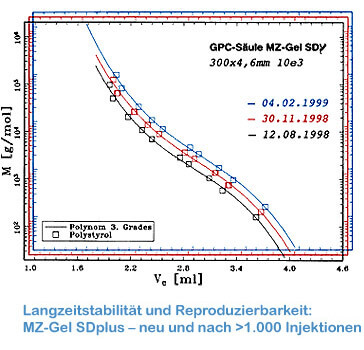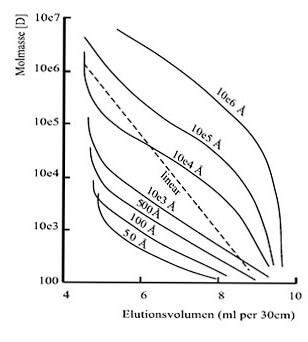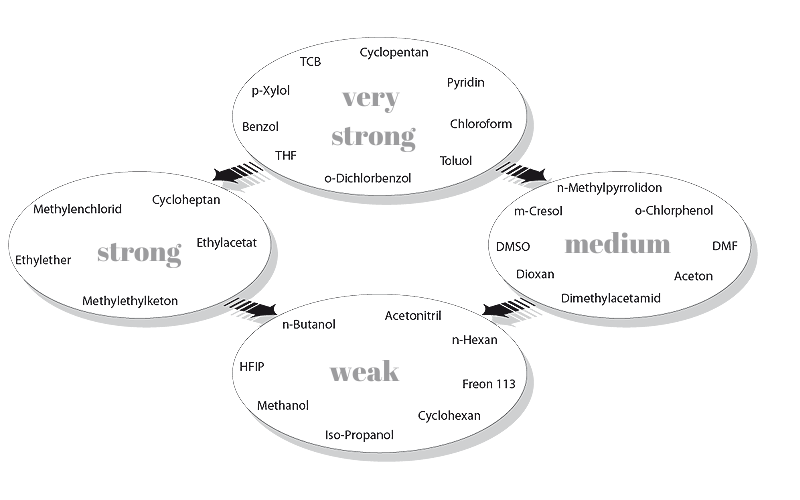Especially for organic eluents
General information
MZ-Gel SD plus is a high-performance copolymer styrene-divinylbenzene with a high degree of cross-linking developed by MZ-Analysentechnik GmbH. It was specially developed for the demanding and powerful GPC. We produce our MZ-Gel SD plus in compliance with high quality requirements and test every single column in quality control.
- Absolutely spherical particle shape with a very narrow particle and pore size distribution
- Available in newly developed state-of-the-art column hardware with a guaranteed refill option
- Particularly reliable and long-term stable

Technical specifications
MZ-Gel SDplus consists of a cross-linked copolymer styrene divinylbenzene with a very narrow pore and particle size distribution. Our GPC columns are offered in 7 porosities and linear as new and in refill. Typical tray count for the material MZ-Gel SDplus 3µm is > 100,000 trays/m. The 5 µm material also has a high selectivity and typically achieves 80,000 – 100,000 theoretical plates/m.
| MZ-Gel SDplus | 3 microns | 5 microns | 10 microns |
|---|---|---|---|
| particle shape | spherical | spherical | spherical |
| porosity [Å] | 50-10 3Å _ | 50-10 6 Å and linear | 50-10 6 Å and linear |
| Number of trays: minimum guaranteed [m -1 ] | 100,000 | 60,000 | 50,000 |
| Plate number: typical range [m -1 ] | 120,000 | 80,000 | 60,000 |
| Pressure stability [bar] | 160 | 160 | 160 |
| Pressure per 30 cm [bar]* | 40 | 25 | 15 |
| max. flow Analytical 8 mm ID | 1.5mL/min | 1.5mL/min | 3mL/min |
| Max Flow Narrow-bore 4.6mm ID | 0.6mL/min | 0.6mL/min | 0.6mL/min |
| max. flow preparative 20 mm ID | 10mL/min | 20mL/min | |
| working temperature | up to 100° C | up to 100° C | up to 100° C |
* Specification refers to column 300 x 8 mm, flow 1 ml/min, eluent THF
| porosity | molecular weight range | exclusion limit |
|---|---|---|
| 50Å | < 2,000 | 3,000 |
| 100Å | < 3,000 | 5,000 |
| 500Å | < 20,000 | 20,000 |
| 10e3Å | 1,000 – 40,000 | 70,000 |
| 10e4Å | 4,000 – 500,000 | 700,000 |
| 10e5Å | 10,000 – 2,000,000 | 4,000,000 |
| 10e6Å | 200,000 – 10,000,000 | > 10,000,000 |
| Linear | 1,000 – 1,000,000 | > 2,000,000 |

Solvent Compatibility
MZ-Gel SD plus GPC columns are manufactured, tested and shipped in THF as standard. Of course, they are also available in other common solvents on request. When changing the solvent, the swelling behavior must be taken into account.
GPC solvents can be divided into four groups from very strong to weak according to their swelling behavior. This results in the following conversion options:

